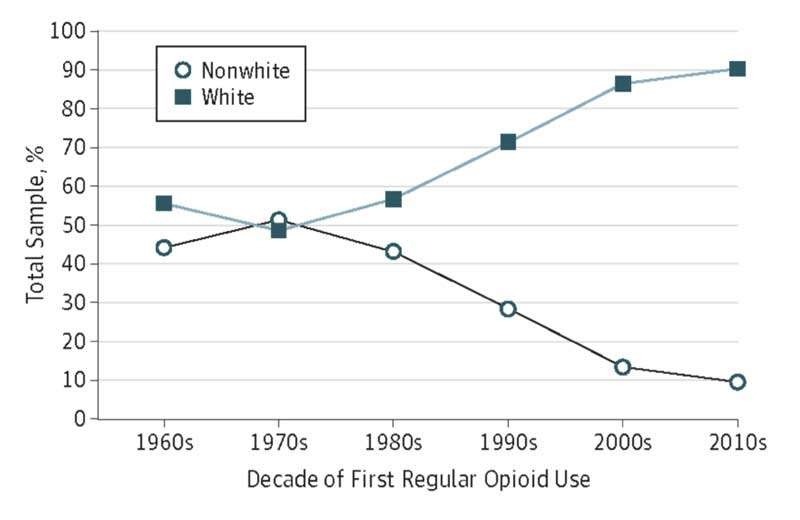Heroin and prescription opioid pain relievers both belong to the opioid class of drugs. These drugs have different effects that are determined by their pharmacological properties, the way they are taken, and how they affect brain activity.
People who began using heroin in the 1960s were predominantly young men from minority groups living in urban areas (82.8 percent; mean age at first opioid use, 16.5 years) whose first opioid of abuse was heroin (80 percent). The epidemic of prescription opioid abuse has been associated with a shifting of the demographic of opioid users toward a population that is somewhat older (mean age at first opioid use, 22.9 years), less minority, more rural/suburban, with few gender differences among those who were introduced to opioids through prescription drugs. Whites and nonwhites were equally represented in those initiating use prior to the 1980s, but nearly 90 percent of respondents who began use in the last decade were white.1
Because heroin is often injected, the upsurge in use also has implications for HIV, hepatitis C (HCV), and other injection-related illnesses. Recent studies suggest that having used opioid pain relievers before transitioning to heroin injection is a common trajectory for young injection drug users with HCV infection.2 A study of new HCV infections in Massachusetts found that 95 percent of interview respondents used prescription opioids before initiating heroin.3
References
- Cicero TJ, Ellis MS, Surratt HL, Kurtz SP. The changing face of heroin use in the United States: a retrospective analysis of the past 50 years. JAMA Psychiatry. 2014;71(7):821-826.
- Klevens RM, Hu DJ, Jiles R, Holmberg SD. Evolving epidemiology of hepatitis C virus in the United States. Clin Infect Dis. 2012;55(S1):S3-S9.
- Church D, Barton K, Elson F, DeMaria A, et al. Notes from the field: risk factors for hepatitis C virus infections among young adults – Massachusetts, 2010. Morbidity and Mortality Weekly Report (MMWR). Atlanta, GA: Centers for Disease Control and Prevention; 2011.

